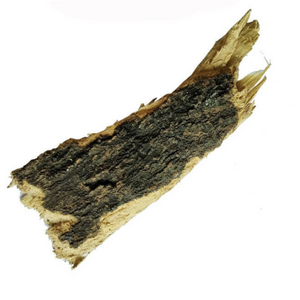

Vilamaram / Wood Apple Tree Bark
Botanical Name: Limonia acidissima
English Name: Wood Apple Tree Bark
Tamil Name: விளாமரத்து பட்டை / Vilamarathu Pattai
Telugu Name: వెలగ / Velaga
About Vilamaram (Wood Apple Tree Bark)
The Wood Apple tree grows to a height of 9-10 meters with dark grey bark and thorny branches. The bark is ridged, fissured, and scaly, and there are sharp spines 3/4 to 2 inches long on some of the zigzag twigs. The deciduous, alternate leaves, 3 to 5 inches long, are dark-green, leathery, often minutely toothed, blunt or notched at the apex, dotted with oil glands, and slightly lemon-scented when crushed.
Internal Benefits of Vilamarathu Pattai (Wood Apple Tree Bark)
- Reduces Fever: The root and bark of the wood apple tree possess anti-inflammatory and antimicrobial properties that can help reduce fever. A decoction made from the root and bark can be taken 2-3 times a day for at least three days to help reduce fever.
External Benefits of Vilamarathu Pattai (Wood Apple Tree Bark)
- Cures Snakebites and Bee Stings: The bark is traditionally used to treat snakebites and bee stings due to its potent medicinal properties.
How to Use Vilamarathu Pattai (Wood Apple Tree Bark) Internally
- For Fever Reduction: Prepare a decoction by boiling 5 grams of the bark in 100 ml of water. Boil the mixture for a few minutes, then let it cool. Filter the content and drink it before meals. Repeat this 2-3 times a day for at least three days.
How to Use Vilamarathu Pattai (Wood Apple Tree Bark) Externally
- For Snakebites and Bee Stings: Make a paste of the bark and apply it directly to the affected area.
Procurement & Agriculture Method
90% of our herbs are wild crops and 100% organic by nature. The remaining 10% are organically grown, dried, and pulverized without any chemicals or preservatives.
Disclaimer
The consumption details and benefits listed on our website are derived from ancient Tamil books and Siddha records, further refined by our team of Siddha doctors. However, we advise you to consult your doctor before use.
| Gram |
100, 250, 500, 750, 1000 |
|---|
